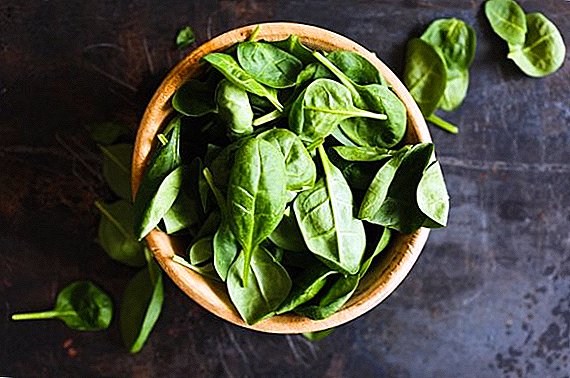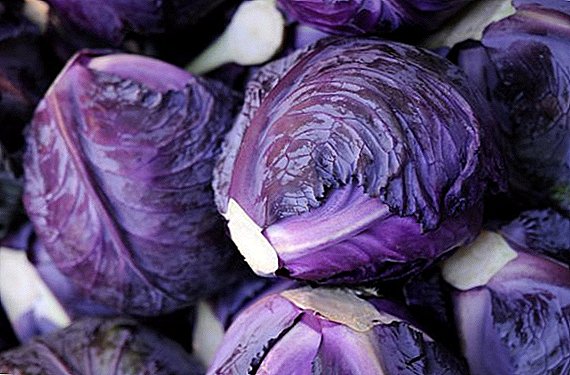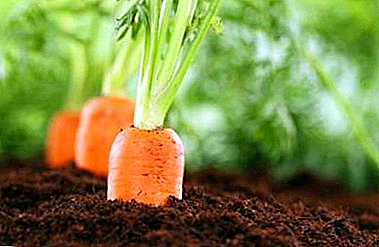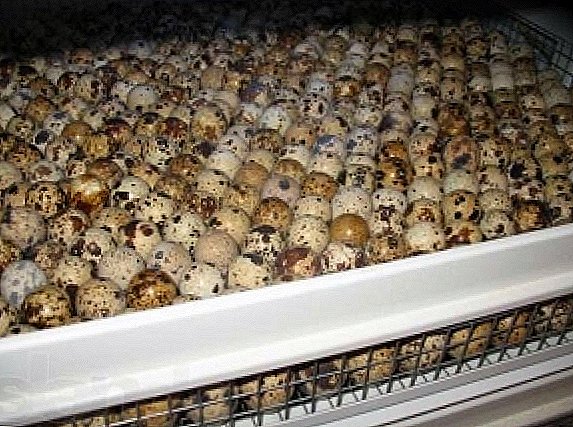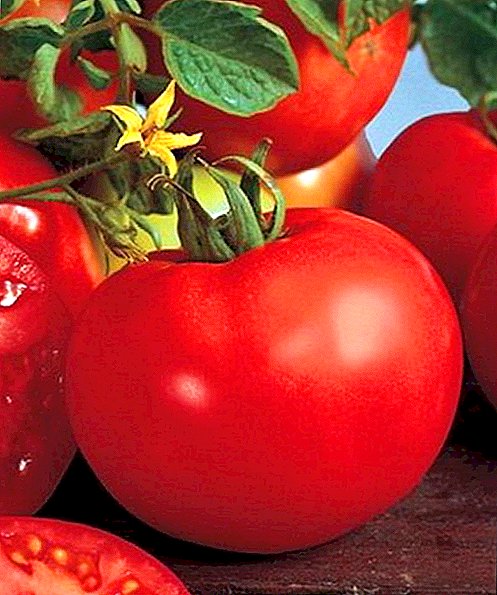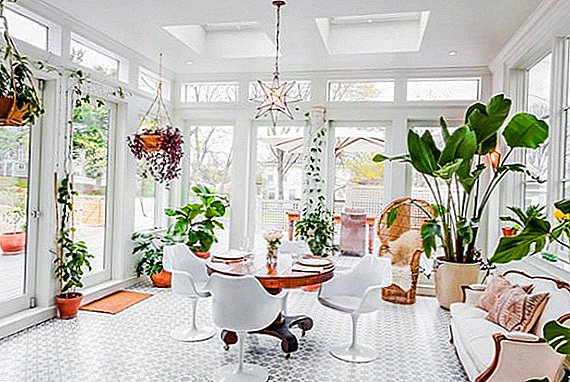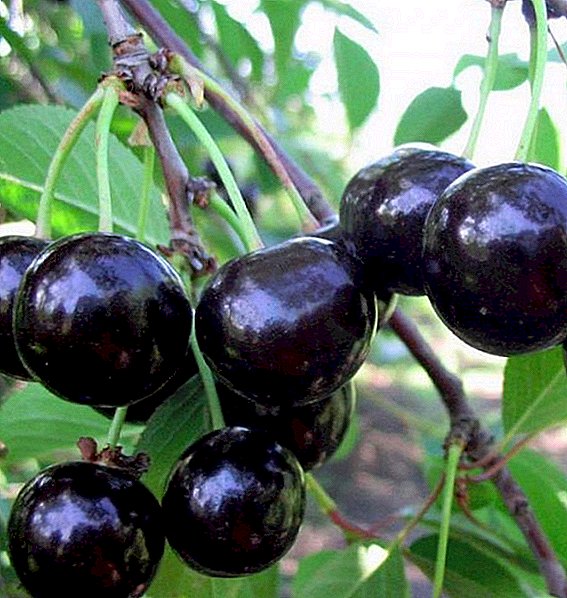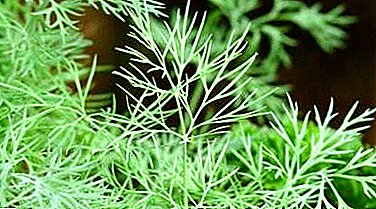
Dill quite unpretentious plant. It has long been accustomed to treat it as a weed, but it is impossible to imagine a table without this fragrant and lush green. Dill is delicious both fresh and dried, and in the process of preservation it is simply irreplaceable.
Despite the ease of care, many may complain that this spice does not grow in the garden or simply does not sprout. So why is it not growing?
How many days to wait for the harvest, what determines the rate of growth of greenery on the garden?
Dill grows on average from 30 to 75 days. This fact affects the variety of greenery. The growth rate of dill depends on the variety, breeding methods and place of cultivation. There are varieties for early and late planting of dill.
- "Grenadier" - an early ripe grade, the harvest can be collected in a month after landing.
- "Lesnogorodsky" - mid-season variety. Stable gives greens, even when an umbrella is formed and the seeds ripen. The ripening time is 70 - 80 days from germination to maturity.
- "Patterns" - late ripe grade. From the first shoots to harvest from 42 to 57 days. Pretty high yield. The variety is practically not sick, and often reaches a meter in height.
For, to dill gave the maximum yield, you must remember some rules:
- Sow the dill should be slightly germinated seeds in a wet fertilized soil. To do this, the seeds are placed in a moistened gauze and put in a warm dark place. As they dry, they must be sprayed with water.
Soon the seeds will germinate and they can be planted in the prepared soil. In this case, you will gather a big harvest.
- When planting crops can not roughly throw the seeds into the ground. In this case, they may not climb.
- If you plant seeds in a dry soil, it should be immediately watered after planting the crop.
- Although dill and undemanding plant, it is very fond of sunlight. Therefore, when disembarking, it is necessary to take care of such a place in the garden where the sun's rays will penetrate at least 12 hours a day.
In which month gives the harvest in the country?
How long does the culture ripen? It depends on the type and time of disembarkation. Dill seeds are sown in autumn and springaccordingly, the crop is harvested from May to September.
A photo
Look at the photo how fragrant spice grows:




Why greens do not develop at all or does it badly, what to do in this case?
Consider the main reasons that the green has grown, but does not develop.
Natural causes
Eliminate the natural causes (not time yet). Usually dill begin to be planted in early spring. Cucumbers, beans, potatoes - the best predecessors for planting.
Substandard seeds
Bad seeds - one of the main causes of poor fruiting dill. To be sure of the quality of the raw material for planting this spice, you need to take care of it yourself and use your seeds.
Grains must be harvested from plants already grown in the garden. It is very important to store them properly, do not expose to moisture and avoid exposure to direct sunlight. If you do not have your seeds, experienced gardeners are strongly advised to purchase them at the pharmacy.
Poor soil or lack of fertilizer
Increased acidity of the soil - the death for dill. It is necessary that the soil was sufficiently wet. Fertilizers play an important role.
With proper planting and proper care, dill grows lush and fragrant.. In dry and cracked soil, the crop will shoot an arrow too early and the seeds from such a plant cannot be used next year for planting.
That is why it is very important to monitor the moisture and fertility of the soil, especially in the summer. Dill should be planted in well-prepared soil. It should be loose and fertile. If your bed can not boast of such qualities, you must fertilize it in advance.
In the spring, chicken manure or manure is brought into the ground during digging.. In order to avoid infertile soil for the next year, it is necessary to add mineral fertilizers to it in the fall. Under the autumn digging to a depth of 20-25 cm make 2-3 kg per square meter of humus.
Diseases and pests
 The most common disease for spices is powdery mildew. The first sign of the spread of the fungus is the presence of white bloom. To combat this disease, use a solution of potassium permanganate or drugs containing copper.
The most common disease for spices is powdery mildew. The first sign of the spread of the fungus is the presence of white bloom. To combat this disease, use a solution of potassium permanganate or drugs containing copper.
To prevent this disease in the future, carefully monitor the condition of your landings. Infected areas with greens must be removed.. The black leg can also attack your plant with dill. The first sign is a rotting stem, which begins to turn black and leads to the death of the plant.
The drug Fundazol will help in the fight against this disease. The cause of the disease can be not only too abundant watering, but also sharp fluctuations in temperature, lack of loosening, a crust on the soil surface.
To avoid such problems it is necessary to monitor the condition of the soil, make mineral fertilizers in time. If the plant gets a red tint, look for one of two reasons.
- The first - the soil is saturated with ash and lime, as well as phosphorus. It is strictly forbidden to make such fertilizers.
- The second reason is Fusarium disease. In case of mass infection, it is necessary to remove infected plants and monitor the spread of the disease.
Aphid - a fairly common pest for dill. For the prevention of the fight against these parasites should not be planted thickly landing. Next to them it is recommended to plant mallow and chamomile. Aphid does not tolerate the smell of these plants. An umbrella moth can also attack your plant with dill.
To combat it, it is necessary to collect the infected plant and burn it. For prevention, you need to destroy wild umbrella cultures in the area.
Improper care
This reason may also stand in the way of a good dill crop. In order to avoid this you must adhere to the following rules:
- Watering the beds with dill should be 2-3 times a week, but not poured.
- Before planting seeds, it is necessary to make mineral fertilizers, and to obtain lush greenery, water with humus.
- Make it a rule to necessarily weed the bed with dill.
- Thinning and loosening the soil with spice will give excellent results.
- In the heat above the garden bed it is necessary to install a carport.
When you follow these recommendations, you will get a fragrant, lush and rich dill crop that will delight you all year round.


